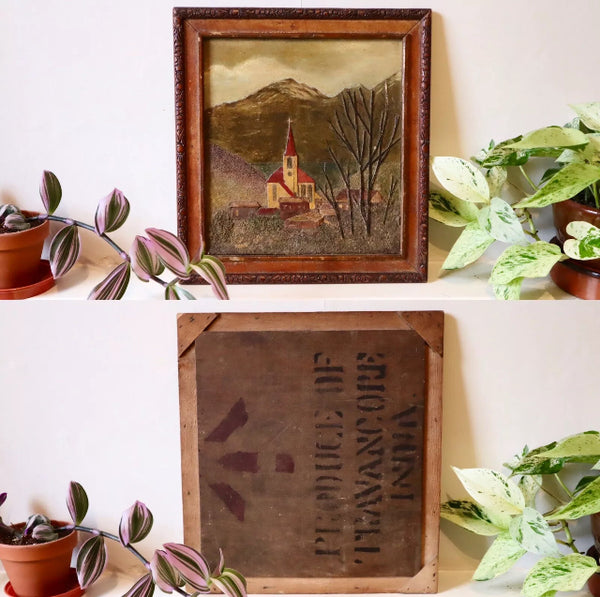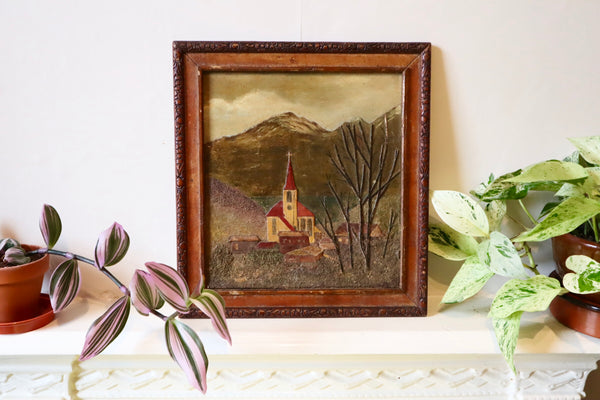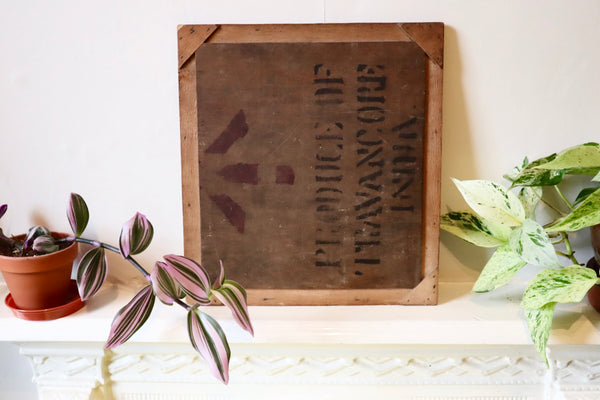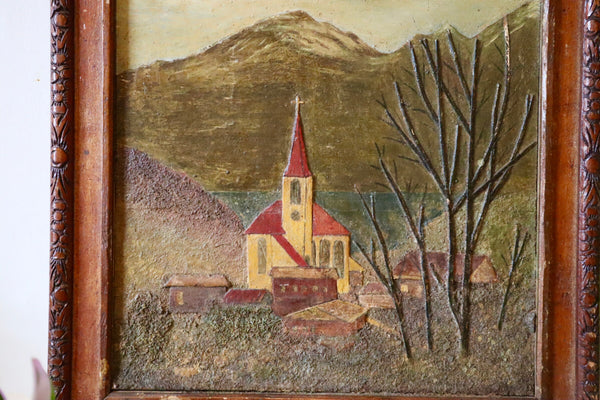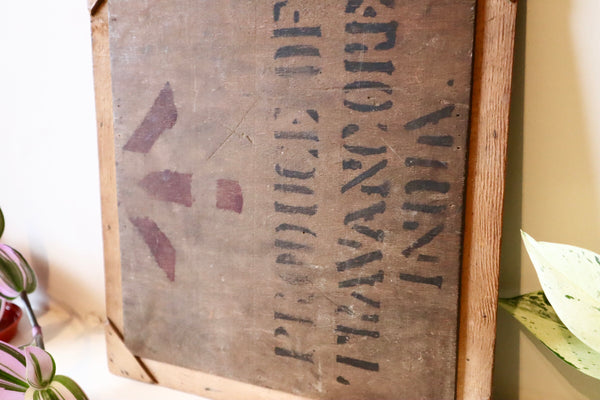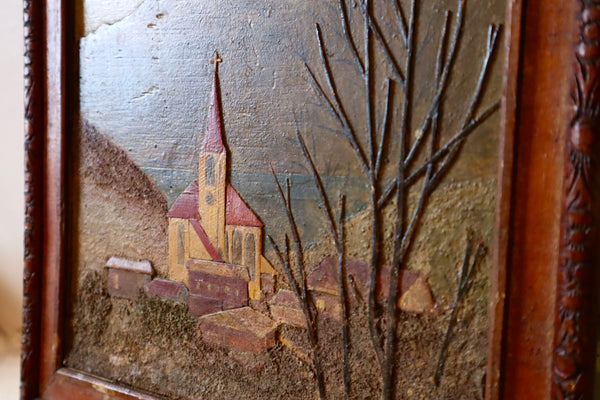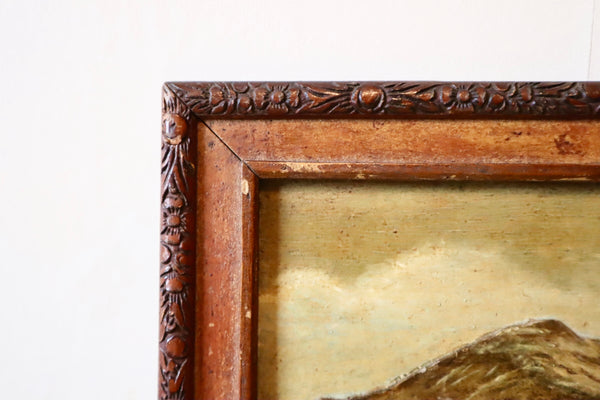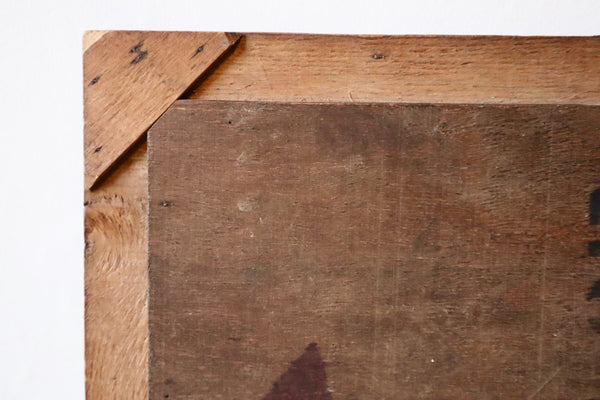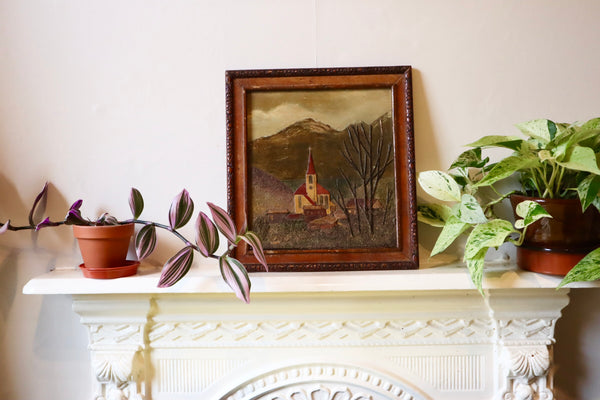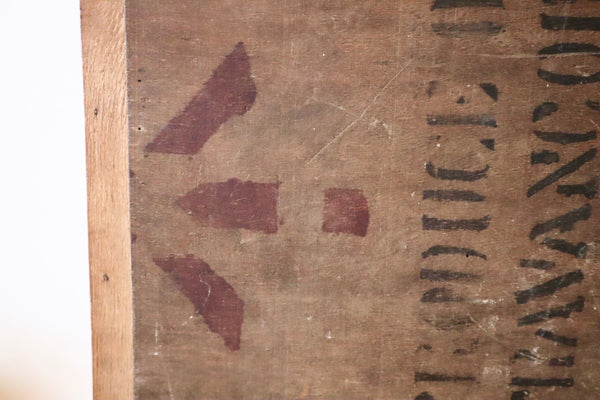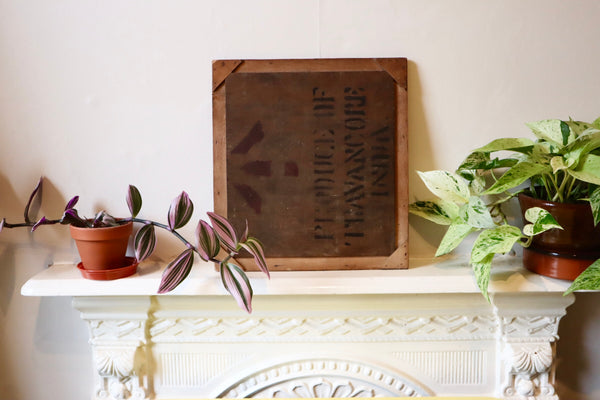Unusual 19th Century Prisoner Of War Or Folk Art Mixed Media Painting
- FREE UK SHIPPING WITH ALL ORDERS
- INTERNATIONAL CUSTOMERS PLEASE PROCEED TO CHECKOUT FOR SHIPPING QUOTES
A Very Unusual 19th Century Prisoner Of War Or Folk Art Mixed Media Painting. Beautifully Carved Wooden Frame And The Painting Itself Has Been Done On A Section Of A Cargo Crate Marked “Produce Of Travancore India”. The Painting Has Been Done With A Mixture Of Elements, Giving It A 3D Effect.
It appears to have been made from cut outs of different materials, almost like the artist was forced to use whatever they could find to create this picture. This gives it an almost three dimensional effect.
It has been created on the back of a section of cargo crate, again, suggesting that this was made with whatever the artist could lay their hands on.
The naive but superbly done carving to the front of the wooden frame suggests an artist with skills in many crafts.
The subject of the painting is a small lone church sat within a range of hills and mountains. A religious element portraying hope, perhaps?
Condition is good, commensurate with age.
Measures 32cm x 29cm x 1.5cm
Weighs 400 grams












